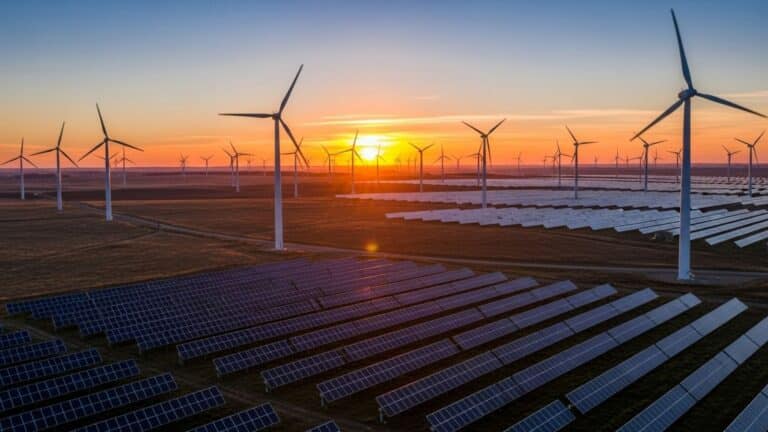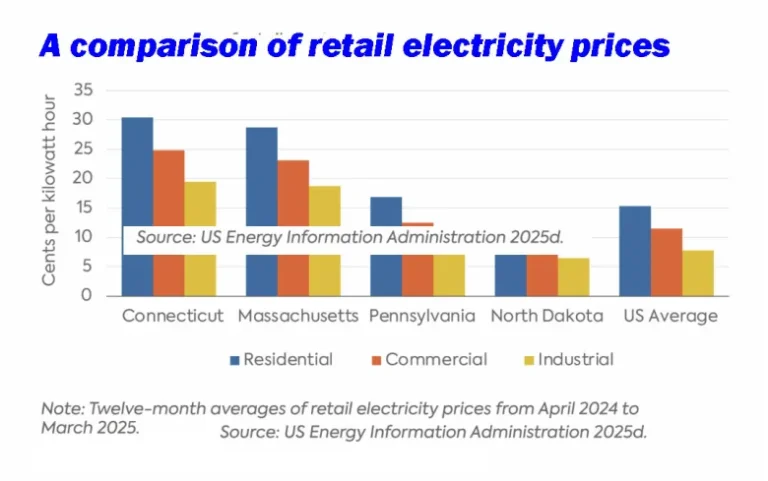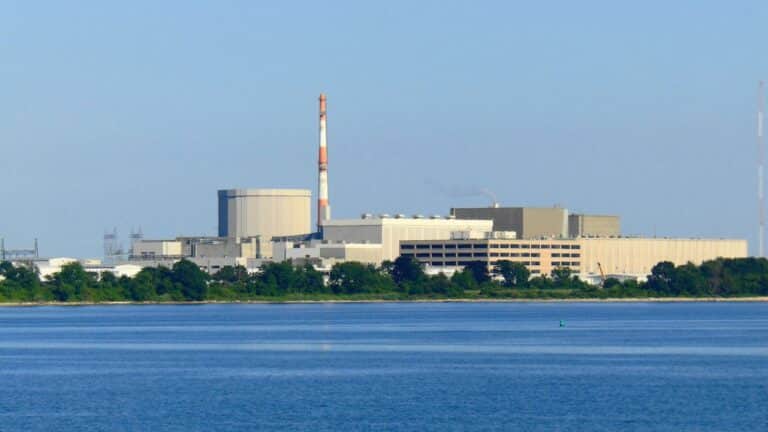Could a strategic lithium reserve kickstart US supply chain development?
NEW YORK -- A strategic lithium reserve is being mooted as a solution to stabilize volatile prices that have hindered American mining projects, allowi
Current Access Level “I” – ID Only: CUID holders, alumni, and approved guests only
Testimonies & Speeches by Julio Friedmann • May 16, 2019
(As Prepared for Delivery before the Senate Committee on Energy and Natural Resources. View the archived webcast here: https://www.energy.senate.gov/public/index.cfm/2019/5/full-committee-hearing-to-examine-ccus-and-to-receive-testimony-on-legislation)
Chairman Murkowski, Ranking Member Cantwell and Members of the Committee, thank you for inviting me here today to discuss the EFFECT Act and the Dept. of Energy’s CCUS programs. My name is Julio Friedmann. I am a Senior Research Scholar at Columbia University’s Center on Global Energy Policy at the School of International and Public Affairs.
It is an honor to appear again before this Committee to discuss CCUS, and timely. Since my last congressional testimony, the world has changed dramatically. Analysis from the Intergovernmental Panel on Climate Change and dozens of other organizations conclude that CCUS is essential to achieve important climate targets, including 2C, let alone 1.5. [1] In fact, without CCUS most models do not converge on a solution at all. Those that do conclude dramatically higher costs – more than twice to total needed investment, to hit the same targets. That’s why the Center for Global Energy Policy [2] has launched the Carbon Management Research Initiative, [3] which I direct. The Initiative draws on the extraordinary capabilities of Columbia Univ., including centers like the Earth Institute, Sabin Law Center, and faculty like Peter Keleman, Alissa Park, Bruce Usher, and Peter deMenocal.
The world of CCUS has also changed. [4] Today, eighteen CCUS projects operate worldwide and prevent 34 million tons CO2 from entering our air and oceans every year. Eight of these, the largest number for any country, are in the US. More are on the way, in part because of policies enacted by House and Senate, notably the 45Q amendments under the FUTURE act. [5] New projects, stimulated by these new laws, have been announced and more will be announced soon.
New studies by groups like the International Energy Agency, [6] Global CCS Institute, and the Energy Transition Commission [7] have underscored how CCUS is an essential component to supporting both economic growth and rapid, deep decarbonization. Many groups, ranging from Green New Deal advocates to the US Chamber of Commerce and all major oil companies, have stated strongly that man-made climate change is an urgent threat requiring more ambition and action. Many countries have begun to add CCUS to their climate and energy action plans. This includes new projects in China, Norway, and the Middle East; formal announcement of CCUS policy imperatives in the UK, Netherlands, and Canada; and highlighting of CCUS at the pending Clean Energy Ministerial in Vancouver later this month.
It should be clear from all of this that CCUS deployment is not some untested technology or greenwashing or a license to pollute. Quite the opposite – it is an overt, committed effort to deeply and quickly reduce emissions in a cost-effective way while sustaining economic growth and communities at risk. [8]
My testimony will focus on how the policies like the EFFECT Act [9], [10] (Enhancing Fossil Fuel Energy and Carbon Technologies) and government agencies like the US Dept of Energy can help the US maintain leadership, sustain jobs and communities, innovate quickly, and rapidly reduce carbon pollution. While additional policy, investment and action will be needed, the EFFECT Act could be an important component of success if enacted.
From 2013-2016, I served as Principal Deputy Assistant Secretary for the Office of Fossil Energy at DOE. That experience led me to better understand the value of that Office’s mission and those of the other Applied Energy offices. Importantly, well oriented and aligned R&D helps lay the foundation for scale-up through private investment and market deployment. At that time, we began rethinking the R&D portfolio within the Office of Fossil Energy, driven by the profound shifts in US and global energy markets; the incredible scale-up of US unconventional oil and gas production, export of LNG and crude oil, passage of the Paris Accords, and the stunning reduction in renewable energy prices. To respond to these dramatic shifts while serving the public, we instituted changes in the substance and direction of our R&D programs, in partnership with the National Energy Technology Lab:
To ensure that our new directions would prove useful and valuable, we engaged industry, academic leaders, National labs, our international counterparts, and governmental leaders. It soon became clear not only would these new efforts prove important, but also that additional programs with additional funding would prove necessary. These required both an expansion of the identified lines and also new programs focused on large pilots, ultimately leading to a reimagined program of demonstration projects.
It also became clear that the primary task was improved environmental stewardship, chiefly in reducing CO2 emissions. That remained true regardless of the fuel source (coal, gas, biomass) or application (power or heavy industry). To accomplish this mission, we needed to extend well beyond benchtop research and bring technologies and clean energy systems close to market.
If any of these themes sound familiar, perhaps it is because most are embodied formally in the framework of the EFFECT Act:
All of these new imperatives are represented in the EFFECT Act. It would provide authorization to undertake this new and important work and proposes the appropriations levels necessary to have material economic effect. I see it as similar to the SunShot Initiative, which helped focus innovation in solar power and contributed substantively to achieving rapid and profound cost reductions in the US. The new authorizations of the EFFECT Act, matched by future appropriations, could achieve similar outcomes in a short number of years.
As essential as innovation investment is and as valuable as the EFFECT Act may prove, innovation alone will not bring these kinds of technologies to market. Many groups, including The Carbon Capture Coalition, the Global CCS Institute, Sec. Moniz at the Energy Futures Initiative, and my own colleagues at the Columbia Center on Global Energy Policy, stress that additional policies are needed to accelerate deployment and align markets for emissions reductions. These are a few important additional policy options the Committee may wish to consider:
In summary, I see the EFFECT Act as important legislation to help drive innovation. It would deliver valuable support to critical parties and actors building a clean energy future. I commend its authors for their insight and excellence in crafting the legislation. I also see it as one of many critical policy actions needed to meet the needs of the global climate and maintain economic security and strength. With that, I look forward to your comments and questions.
[1] IPCC, 2018: Summary for Policymakers. In: Global Warming of 1.5°C. An IPCC Special Report on the impacts of global warming of 1.5°C above pre-industrial levels and related global greenhouse gas emission pathways, 32 p.: https://www.ipcc.ch/site/assets/uploads/sites/2/2018/07/SR15_SPM_version_stand_alone_LR.pdf
[2] Center for Global Energy Policy website: https://energypolicy.columbia.edu
[3] Carbon Mgmt. Research Initiative Website: https://energypolicy.columbia.edu/carbon-management-research-initiative
[4] Global CCS Institute, 2018, Global Status of CCS Report: https://www.globalccsinstitute.com/resources/global-status-report/
[5] Energy Futures Initiative, 2018, Advancing large scale carbon management: Expansion of the 45Q tax credit, EFI Report, 26 p.: https://static1.squarespace.com/static/58ec123cb3db2bd94e057628/t/5b0604f30e2e7287abb8f3c1/1527121150675/45Q_EFI_5.23.18.pdf
[6] International Energy Agency (IEA), World Energy Outlook 2018, November 2018.
[7] Energy Transition Commission, 2018, Mission Possible: Reaching near-zero emissions from harder-to-abate sectors by mid-century: www.energy-transitions.org
[8] IEA op cit.; IEA, 2016, 20 years of CCS – Accelerating future deployment, 115p.: https://webstore.iea.org/20-years-of-carbon-capture-and-storage
[9] US Senate, 2019, EFFECT Act, fact sheet: https://www.energy.senate.gov/public/index.cfm?a=files.serve&File_id=9B383CA2-97EF-4C61-93A6-60B740BFC2B0
[10] US Senate, 2019, EFFECT Act: https://www.energy.senate.gov/public/index.cfm?a=files.serve&File_id=8AA33DF3-3527-4440-8D32-722B51CE3D30
[11] Sandalow D. et al., 2017, Carbon Dioxide Utilization (CO2U): ICEF Roadmap 2.0, Innovation for A Cool Earth Forum, Roadmap Series, 56 p.: https://www.icef-forum.org/pdf2018/roadmap/CO2U_Roadmap_ICEF2017.pdf
[12] Sandalow D et al., 2018, Direct Air Capture of Carbon Dioxide: ICEF Roadmap, Innovation for a Cool Earth Forum: https://www.icef-forum.org/pdf2018/roadmap/ICEF2018_DAC_Roadmap_20181210.pdf
[13] Rhodium Group, 2019, Capturing Leadership: Policies for the US to advance direct-air capture technology: https://rhg.com/research/capturing-leadership-policies-for-the-us-to-advance-direct-air-capture-technology/
[14] Negative National Academies of Science, Engineering, and Medicine, 2018, Negative Emissions Technologies and Reliable Sequestration: A Research Agenda, Washington, DC: The National Academies Press: https://doi.org/10.17226/25259
[15] Great Plains Institute, 2017, 21st Century Energy Infrastructure: Policy recommendations for development of American CO2 pipeline networks, 27p,.: https://www.betterenergy.org/wp-content/uploads/2018/02/GPI_Whitepaper_21st_Century_Infrastructure_CO2_Pipelines.pdf
[16] Nagabhushan D & Thompson J, 2019, Carbon Capture and Storage in the United States Power Sector: The Impact of 45Q Federal Tax Credits (Boston: Clean Air Task Force), 14: https://www.catf.us/wp-content/uploads/2019/02/CATF_CCS_United_States_Power_Sector.pdf
[17] Kaufman, N., 2019, “A Clean Energy Standard’s Weaknesses May Be its Biggest Strengths: https://energypolicy.columbia.edu/sites/default/files/file-uploads/CES_CGEP_Commentary_Final.pdf
[18] Kaufman N, 2019, “Interactions Between a Federal Carbon Tax and other Climate Policies: https://energypolicy.columbia.edu/research/report/interactions-between-federal-carbon-tax-and-other-climate-policies
On November 6, 2025, in the lead-up to the annual UN Conference of the Parties (COP30), the Center on Global Energy Policy (CGEP) at Columbia University SIPA convened a roundtable on project-based carbon credit markets (PCCMs) in São Paulo, Brazil—a country that both hosted this year’s COP and is well-positioned to shape the next phase of global carbon markets by leveraging its experience in nature-based solutions.

Connecticut needs an honest debate, and fresh thinking, to shape a climate strategy fit for today, not 2022.

